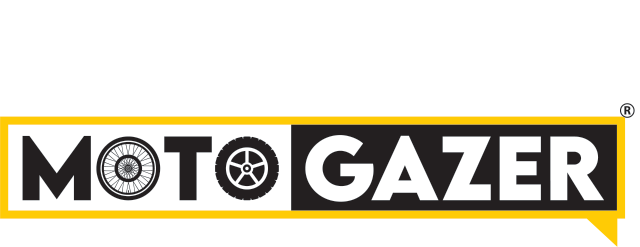Motorcycle Helmets – An Essential Safety Component
While it is no secret that India is ranked at the bottom when it comes to road safety. Further, the Indian two-wheeler market is paving its way to make advancements in areas of safety features and technology. Moreover, intending to lower road fatalities to half by 2025, the Indian government took a very important step in 2019 towards improving road safety. By directing all four and two-wheelers manufacturers in the country to install ABS (Anti-lock braking system) and Combi-braking System (CBS).
But one should always keep in mind that the safety of a rider is not just dependent on their riding behavior’s, but also the riding gear they choose to wear. As riding gear reduces chances of fatality by a significant margin in case of any mishaps. Moreover, at its very basic, riding gear consists of a helmet, a riding jacket, riding boots and a pair of riding pants. While India may be far away from the concept of ‘ATGATT’ which means ‘All The Gear, All The Time’ in the motorcycling world, a helmet is the minimum safety requirement while riding.
Why should you wear a Helmet?
Helmets are designed to absorb the impact of a crash or fall and distribute it across the head and neck. Thereby protecting the rider from serious head injuries, such as traumatic brain injury, skull fractures etc. Additionally, they also protect the rider from inclement weather such as wind, rain, and sun. To promote road safety for the riders, the Indian Government made it mandatory for every individual aged above 4 years to “wear protective headgear” when riding pillion a motorcycle in a public area along. Further, the helmet laws for motorbikes include wearing a helmet for both rider and pillion. And noncompliance with the laws can subject motorbike riders to a fine.
Additionally, the use of helmets has been proven to reduce the risk of head injury in the event of a crash or fall by up to 85%. Which makes it all the more important to wear a helmet every time you are on road.
And in case you are looking to make your purchase for an apt helmet, we have created a perfect guide enlisting the parameters to look out for that will help you to park your decision:-
Coverage/ Types of Helmets :-
There are various styles available to choose from, such as full-face, open-face, and modular.
- Full-face Helmet: The most popular type of helmet for motor riders is the full-face helmet. Additionally, it covers the entire head, including the chin, and provides the most coverage and protection. They are also the safest type of helmet, as they protect in the event of a crash.
- Open-face Helmet: Open Face Helmets provide the same level of protection as full-face helmets for the top back and sides of the head, however, they are significantly less safe as they lack a chin bar. Despite this, many riders prefer open-face helmets as they allow them to feel the wind on their skin.
- Modular Helmet: A modular helmet combines the protection of a full-face helmet with the versatility of a half-face helmet. It is called a ‘modular’ helmet because the chin-bar can be flipped up to open up the face of the helmet. Generally, this type of helmet is heavier than a full-face helmet due to the hinge mechanism and typically includes a visor and sometimes an inner sun visor as well. While it provides less protection than a full-face helmet, it is still more protective than an open-face helmet.
Shape :-
The design of the helmet’s exterior can differ based on the brand and style; however, the interior shape is more essential. For the helmet to fit comfortably, it must correspond with the shape of the wearer’s head, which can vary from round to oval to egg-shaped. If the inner shape does not match the individual’s head shape, uncomfortable pressure points can be created. Additionally, the wearer’s chin should not be pressing against the chin bar; they should be able to open and close their mouth without difficulty. It is best to try on the helmet before purchasing it, rather than buying it online or from someone else.
Size :
It is essential that the helmet is the correct size for the wearer, neither too tight nor too loose. If it is too large, it can slip off during a fall, and if it is too tight, there is a risk of long-term discomfort and health issues. Before purchasing a helmet, it is important to try it on and make sure that it does not move when shaking the head from side to side or up and down. Additionally, do note that the helmet should have a tighter fit first as after sometime the padding will get compressed and eventually get more comfortable. Preferably select a helmet that which leave a gap of around 2 fingers in the forehead.
How to check head size


Type of Inside lining :-
The inside lining must be comfortable and fit securely against your face and temples, with no discomfort. It should also be able to absorb moisture, and should be removable & washable, in order to prevent any bad smells or the growth of fungus. If left unchecked, the fungus can cause serious breathing problems.
Ventilation :-
When purchasing a helmet, make sure it has enough ventilation holes or slots to allow for adequate airflow and comfortable breathing. These openings should be located on the front, sides, or back of the helmet.
Noise protection :-
Wearing a helmet with a chin curtain can help reduce ambient and wind noise while riding, making the experience more enjoyable. If the noise level is too high, it can diminish the overall quality of the ride. Therefore, it is recommended to buy a helmet that has a chin curtain to minimize external noise.
Weight :-
The weight of a helmet can make a big difference in comfort. Look for helmets that are lightweight and not too bulky. This will help reduce fatigue and make it easier to wear for extended periods.
Motorcycle Helmet Certification
The most essential point to consider when purchasing a helmet is certification. Ensure the one you buy has been certified by organizations such as ISI, DOT, SHARP, SNELL or ECE. Steer clear of uncertified brands, as it is an indication of their inferior quality and safety standards. Traditionally ISI certified helmets are preferred in Indian Market.
Department of Transportation (DOT):
The USA’s Department of Transportation is a government body responsible for ensuring that helmet and motorcycle gear manufacturers adhere to the required standards. This is done by testing the equipment for field vision, impact negation, height test and penetration resistance.
SNELL:
A SNELL rating is a symbol of excellence in terms of quality and safety. To receive this rating, helmets must pass a series of rigorous impact tests that are more demanding than those necessary for DOT, ECE and ISI qualifications.
Economic Commission of Europe (ECE):
The ECE has a rigorous process that involves using safety-related techniques from both the DOT and SNELL, as well as other tests. These include assessments of the face shield quality, the shell’s rigidity, the chinstrap test etc. Moreover, the helmets are tested by both the manufacturers and ECE professionals in independent labs before being released for sale.
Safety Helmet Assessment and Rating Program (SHARP):
SHARP utilizes a star rating system to evaluate helmets based on their performance in impact and post-impact tests, as well as taking into account aspects like visibility, ventilation, accompaniments, and comfort. This allows for the identification of weak spots in the helmets.
Indian Standards Institute (ISI):
Just like the DOT and ECE ratings, the ISI rating is based on impact and penetration tests, along with labelling and user information requirements. What makes the ISI rating distinct is that it is specifically tailored to India, and must be obtained by all helmets sold in the country.
Best Motorcycle Helmet to Buy?
If you are searching for the best helmet brands with ISI mark, we have got your back. In the below table, we have mentioned the top 6 helmet brands in India along with their bestselling models.
| Sr No. | Helmet Brands List | Best Selling Helmets | Price |
| 1 | Vega | Vega Crux Open Face Black Helmet – M | ₹ 856 |
| 2 | Studds | Studds Ninja Elite With Carbon Strip | ₹ 1,197 |
| 3 | Steelbird | Steelbird SBA-7 7Wings ISI Certified Flip-Up Helmet for Men and Women | ₹ 1,571 |
| 4 | Royal Enfield | Royal Enfield MLG ABS Open Face | ₹ 1,750 |
| 5 | Axor | Axor Apex Venomous Black Blue Helmet – M | ₹ 4,720 |
| 6 | SMK | SMK Twister Full Face Helmet | ₹ 4,850 |
International Motorcycle Helmet Brands
|
Sr No. |
Helmet Brands |
Starting Price |
|
1 |
AGV |
₹ 15,000/- |
|
2 |
Shoei |
₹ 24,000/- |
|
3 |
Bell |
₹ 15,000/- |
|
4 |
HJC |
₹ 11,750/- |
|
5 |
ARAI |
₹ 21,000/- |
| 6 | MT |
₹ 6,250 |
We also present to you our top choices of stores which offer the best deals on motorcycle helmet in your city.
|
List of best Helmet Dealers |
|||
| Mumbai | Pune | Bengaluru | Other Cities |
| CrossRoads The Biker Shop, Mira Road |
Destination Moto, Parvati Paytha | Htrz Mods, BTM 2nd Stage |
Moto Hawk, Kerala |
| Speed Merchant, Worli |
The Riders Den, Khurd | Bulwark, Rajajinagar | DJ Helmets, Kerala |
| AH Helmets, Andheri | Throttlers Yard, Natyagruh | Powersports, HSR Layout | Corsagram, Kerala |
| LazyAssBikers, Andheri |
Pro-Biker Helmets & Accessories, Camp | Motoworld The Racing Store, Lalbagh Main Road | Riderz Planet, Delhi |
| Tiger Moto, Powai |
Moto Central, Ganesh Peth | Orion Motors Riding Store, Koramangal | Race & Racers, Karol Bagh |
Conclusion
Do not be tempted by low-priced helmets as safety and protection come at a cost. Further, wearing the right motorcycle helmet is essential when riding a bike, and the importance of this has been highlighted by traffic laws. Moreover, make sure to consider the structure, features, and make of the helmet you choose. Because when it comes to safety, nothing should be taken for granted – wearing a helmet is an absolute must.


